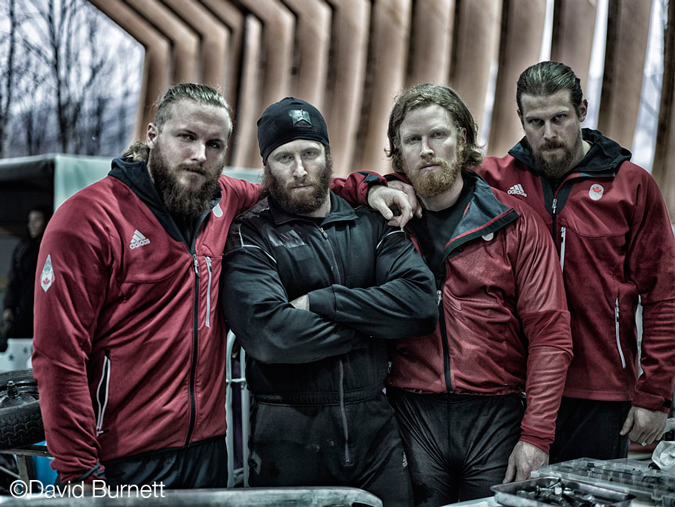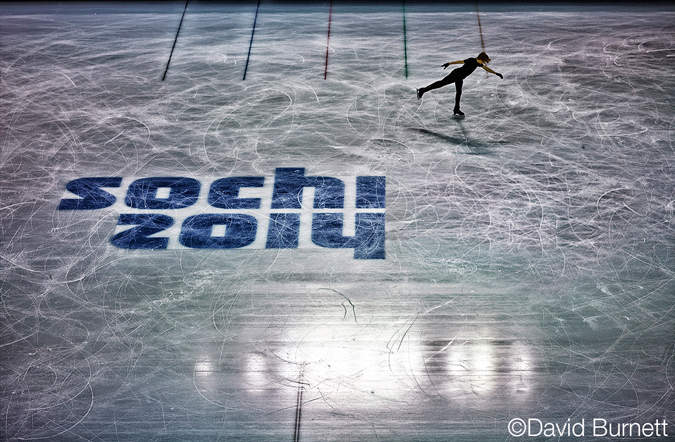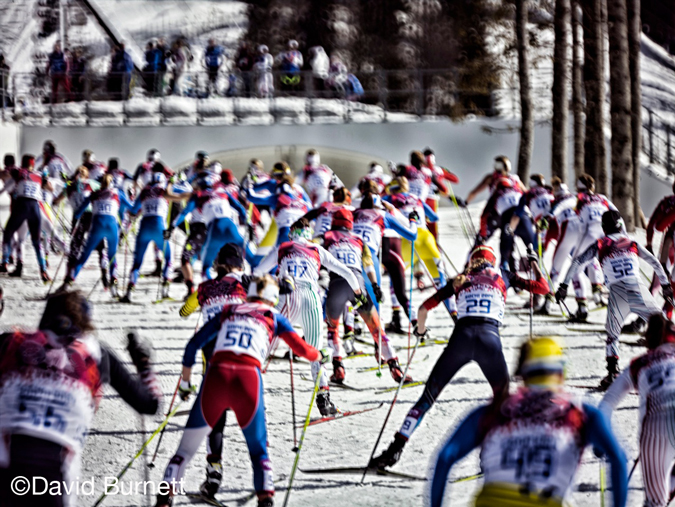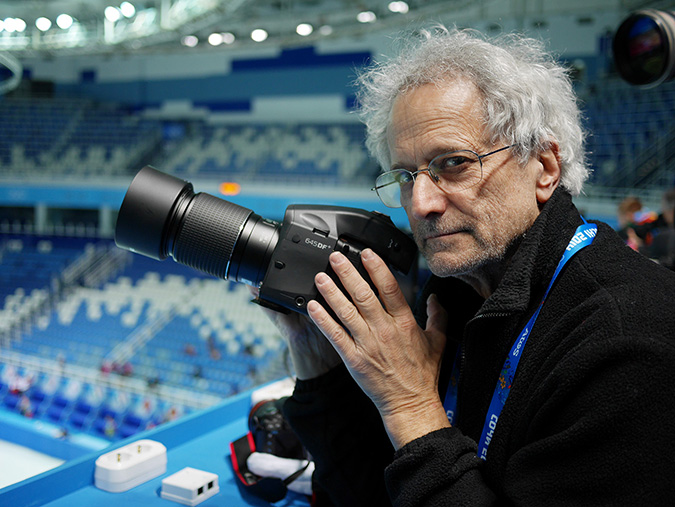Repost from Mamiya Leaf

Canadian Bobsled Team at the Sochi Games
“I was planning a set of portraits for the Atlanta Games back in the mid ‘90s, and as part of the research, I came across some old medium format photos from the ‘20s and ‘30s. They were images taken at the finish line — you know, just as the runner breaks through the ribbon — and they were something to behold. They inspired me.
“Back then, we were all working with motorized Canons and Nikons, and that encounter with the old photos was captivating — the timeless look of that dramatic moment. I’d long had respect for medium format — I’d bought a Hasselblad back in 1973 when I was in Vietnam, but I’d never used it. Instead, I traded the Hasselblad in for a Pentax and traded the Pentax for a Mamiya 645 body which I absolutely loved, and then I started accumulating lenses.
“Which brings us to now. I’ve acquired all this great old glass for my old Mamiya camera, and I was wondering if I could use it with the new Mamiya Leaf Credo 80. Well, the answer was Yes! So I took the new system with me to the Winter Games in Sochi, along with my 80 and 28 and 150 lenses to try it out. I even took this old 500mm mirror lens with me that produces simply beautiful photos. (When they saw it, just about every photographer I met wanted their picture taken with that lens!)

Paul Bonafacio Parkinson (ITAL) – training at the ice arena
“There’s not much you can do in medium format that you can’t SAY you can do in 35mm; but the fact is, there’s a big difference.”
“Some of the things I think are very cool about using the medium format system, and the Mamiya Leaf Credo 80 in particular:
1) There’s more natural separation because lenses tend to be longer (a 150mm on medium format is like a 90 on a 35mm — it has less depth of field). And, on a 35mm system, the whole outer area of sensor would be like a lost / vacuum area; whereas with a medium format, that outer sensor area is pure live pixels — it gives you distance plus coverage.
2) There’s also that thing that happens, that sense of respect you used to get with the old press camera — people react very differently to the bigger camera. They know what a camera is — whether you’re using a phone or a DSLR, and when you pull out the medium format system, they say, ‘that’s a real camera.‘
3) I appreciate being able to affect things, to slow them down or tweak someone’s attention before I look through a viewfinder. Working with a real camera is great because you have to play to your strong suit. When I was aiming at the bobsledders they brought it down for a second. It became a more serious moment. One morning I shot between 10 and 12 different bobsledding teams. You have to understand what that’s like. It’s an Olympic competition and they are focused on their goals. Just to get their attention is not easy.

Womens’ 50 km cross country – “Mass Start”
4) I love that the Mamiya Leaf has that reassuring shutter sound – like it’s announcing: ‘photo just taken.’ It’s a subtle thing; but people recognize you’re serious.
5) What’s great about the Mamiya Leaf Credo is that I can get a second or third frame off if someone blinked or something — so many good pictures you get on the second or third frame. I love my 4×5 but I know it’s going to be another 8 or 9 seconds for a second shot; so this is middle ground — you don’t have four frames a second, but at least a second one is possible.
6) For me, the real work of photography is that you’re always trying to grab something; it’s always slipping away from you; you have to rely on the technology — you’ve got to capture it before it slips away.
7) When you blow up a Mamiya Leaf Credo 80 file on screen, it has a kind of look that’s really nice — it’s polished, like there’s no stress on the pixels, so it doesn’t have to pretend that it’s something that it isn’t. There’s a lot of background and depth, and that’s something I really like. Also I really like the 3×4 4:3 — it’s a format that’s more to my liking; when it’s sharp it’s really, really sharp.
“What’s the Credo’s personality? I think of it as a thoughtful muscle man. It’s got a lot of power.
“When it comes right down to it I’d be happy to get just that one amazing shot at the finish line. That’s what I’m all about. It takes confidence to go for that one image . . . something that maybe no one else is going to get.”

About David Burnett
David Burnett began his photographic career in the late 1960s covering Southeast Asia for both TIME and LIFE magazines where he was the last photographer to cover Vietnam for LIFE. He then joined the French agency Gamma, before co-founding Contact Press Images in 1976 with Robert Pledge in New York. During his 45-year career, Burnett has visited more than eighty countries and received nearly every important award in photojournalism for his work. He has covered both French and American presidential elections since 1972; the famine in Sahel in 1974 and in Ethiopia in 1984; the Iranian revolution and the Ayatollah Khomeini¹s return to Tehran in 1979; and every Summer (and some Winter) Olympics since 1984. He has photographed international figures such as Kofi Annan,Mikhail Gorbachev, Bob Marley, Bill Gates, and Fidel Castro, plus every U.S. president from John F. Kennedy to Barack Obama. Burnett’s work is regularly published in ESPN Magazine, TIME, The New York Times Magazine, The Telegraph Magazine (England), FAZ and Stern (Germany), Il Venerdi (Italy), Paris-Match, and La Vanguardia (Spain). He lives in New York. Please see more information here:
www.contactpressimages.com
www.davidburnett.com